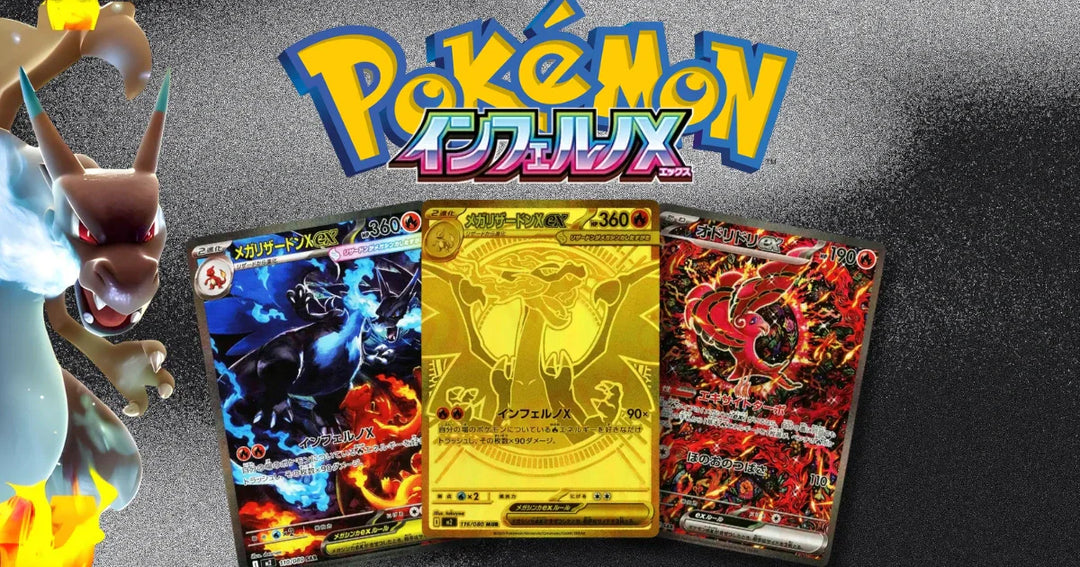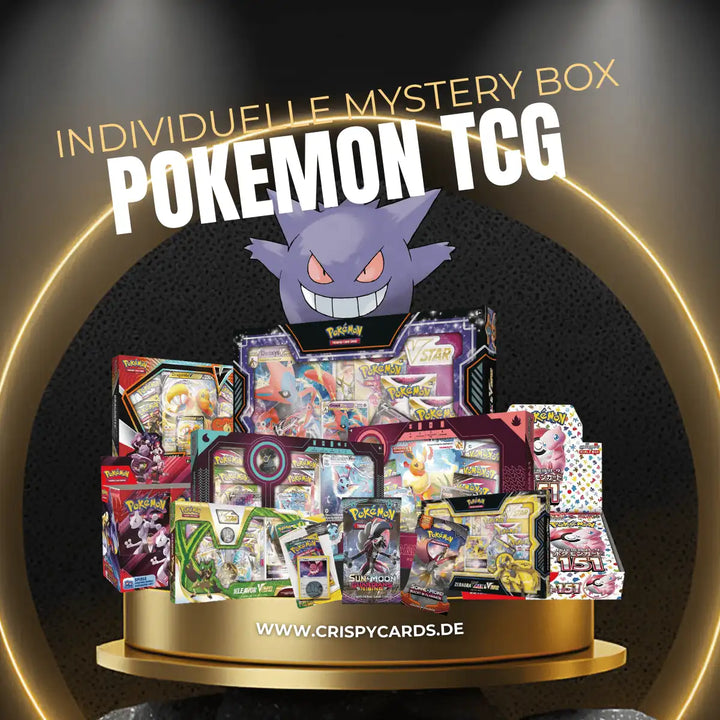Hello to all CrispyCards blog readers!
Have you ever wondered how to best store your Pokémon cards to ensure they stay in the best possible condition? It's understandable, as proper Pokémon card storage plays a crucial role for collectors. As children, we probably didn't always take the best care of our cards and didn't store them properly. We may have even carelessly thrown them around, damaging them in the process. But now, as collectors, it's time to take better care of our cards. This article is for all TCG enthusiasts who want to ensure their favorite cards stay in the best possible condition. We hope you find some useful tips for keeping your cards safe.
Basic tips for storing Pokémon cards
There are some basic rules you should always follow when storing your Pokémon cards to ensure they stay in optimal condition. Here are the most important tips in a clear list:
-
Always use soft sleeves to protect your cards from scratches: Penny Sleeves from Ultra Pro and similar products are good options. Hard sleeves, which are more suitable for gaming, can leave scratches on the card surface. Therefore, they should only be used in combination with a Perfect Size Sleeve for additional protection.
-
Sort your cards into folders or use toploaders and card savers: These offer additional protection. Toploaders are particularly good for protecting cards and are better than simple binders. Card saver binders are another option for securely storing cards.
-
Avoid humidity, heat, and direct sunlight: Sunlight can cause your cards to fade, which most collectors consider a defect. Also, don't store your cards in the attic or basement unless you can ensure that humidity and heat conditions are controlled.
Safe storage of individual cards explained simply
The most important and perhaps most obvious tip is to store your cards in a way that makes them easy to find at any time. You can even use folders or containers and label them accordingly, whether by expansion, set, or language, depending on how you organize your cards. Now you're spoiled for choice when it comes to how you actually want to keep your cards safe.
Pokémon cards in a binder
Storing Pokémon cards in a binder is a popular method among collectors. A binder offers the advantage of allowing you to easily view your cards and sort them according to your personal preferences. However, there are some risks to be aware of. Removing cards from the binder can damage them if you're not careful. To minimize this risk, you can, for example, double-sleeve your cards (it's advisable to practice this on less valuable cards) and slowly and carefully sort them in and out.
The binder itself should always be stored upright to prevent any weight from resting on the cards, which could damage them. Top-loading or card saver binders are highly recommended, although they may not be as aesthetically pleasing. With these binders, double-sleeving and careful handling are less important, as the cards are protected by an additional layer of plastic.
If you decide on a binder, take your time choosing the right one. There are top-loading and card saver binders, bound folders, and ring binders. Ring binders run the risk of denting the cards, especially if too many pages are inserted into the binder. Make sure the pages don't curl when the binder is lying on a table. Curling pages mean that too many pages are inserted, which can lead to damage to the cards. Otherwise, storing them in a binder is straightforward if you follow these tips.
For those who don't want to look at many cards at once and prioritize card security, storing them in a top-loading box is a good option. Storing cards in a top-loading box is less risky than using a binder. When using a top-loading box, the cards should be sleeved and labeled with a Post-It note for easy removal from the top-loading box.
Double sleeving isn't as important in a toploader box as it is in a binder, so it's up to you to decide whether you feel it's necessary. Once your cards are sleeved and labeled with a Post-It, you can slide them into the toploader. Toploaders are usually stored in specially designed collector's boxes, but other suitable containers, such as empty Elite Trainer boxes, are also suitable, as long as the toploaders don't have too much room inside.
What about Pokemon Sealed products?
More and more collectors are fascinated by the idea of collecting products in their original packaging. Given the collectible value of some sealed displays and collections, this is no surprise. Consequently, more and more single-card collectors are also getting into sealed collecting. However, there are also dangers lurking here for your valuable collectibles. As already mentioned, choosing a location with a relatively constant temperature for storing your collectibles is important. A certain amount of ventilation also doesn't hurt.
However, heat and high humidity should be avoided at all costs. If you have sealed products that you don't want to open, it's advisable to place small bags of silica gel near the products to protect them from excessive moisture. This is especially recommended if you store your products in a location like the basement or attic (which should generally be avoided). But even the living room can become such a place in the middle of summer. Note that acrylic boxes are generally not airtight and offer no protection against humidity, so it's advisable to take additional measures.
Optimal storage of trading cards is not rocket science
In this article, you've learned what to look for to keep your cards and sealed products in the best possible condition. With our tips, storing your collectibles properly shouldn't be difficult. Many collectors have already thought about this topic, but we hope this article can shed some light on the matter.
If you enjoyed this post or have constructive criticism to share, please let us know, comment, or share the post with friends who still need to learn about proper card storage! You can also discuss this topic with other collectors in the Poke-Corner community on Discord—everyone is welcome!































